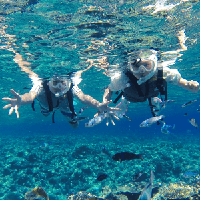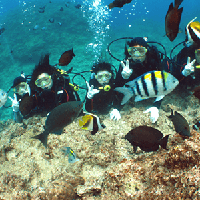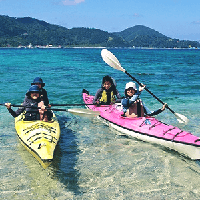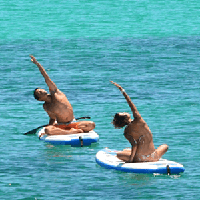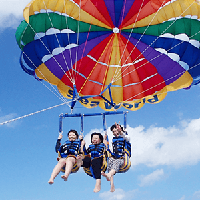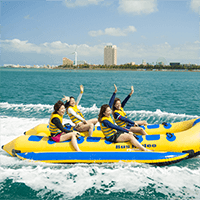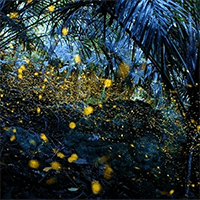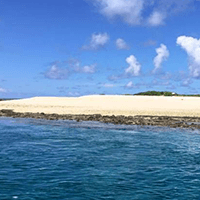List of Goby
- Age 3~Age 18
- Over 6 hours on the day
- 07:00
This is a tour for children only. Children who can travel by train will meet at the east exit of Chofu Station, and those who are being picked up by car will meet at Fukadaiminawa no Sato. This is a Kids Summer Home work DAY at Nogawa Nature School that includes two meals from 7am to around 5pm. Summer vacation independent research plan. One-day child care plan. Only held on weekdays with high tides. From mid-July to the end of August 7:00am Chofu Station East Exit Ground (for children who can ride the train) Fukadai Nigiwai no Sato (for children who are picked up and dropped off by car) ~Experience process~ 7:00am to 9:00am Move to the sea 9:00am to 12:00pm Experience rummaging in the sea (there is also an explanation session on living creatures) Observe 10 types of sea slugs, 10 types of crabs, 10 types of fish, 3 types of starfish, sea urchins, 3 types of sea cucumbers, and octopuses, and observe and explain various living creatures 12:00pm to 1:00pm GUSTO 1:00pm to 3:00pm Search for living creatures in the rivers of Yokosuka city Search for mantis shrimp, mitten crabs, river crabs, monk goby, Yoshinobori, Ukigori, Jyuzukaze goby, and Hebukuro dragonfly larvae. (There is also an explanation session on living creatures) In the rivers of Miura city, we will capture and observe eels in the rivers where they live. 4pm to 6pm Travel to McDonald's & information session on raising animals, feeding habits, and independent research (disbanded after 6pm) Chofu Station or Fukadaimizuno Sato What to bring: marine shoes, change of clothes, swimsuit, drinks (lots), hat, backpack, insect repellent Nogawa Nature School We look forward to your participation.
- Age 3~Age 60
- 2~3 hours
- 07:00 / 09:30 / 12:00 / 14:30
This is a safe, fishing experience for mantis shrimp using a fishing rod at a park in Edogawa Ward. Depending on the season, we will also have a goby fishing experience, so you can learn to fish with bait. After catching your fish, we will give a lecture on how to eat them and how to care for them. Meet at the fishing spot and start fishing for mantis shrimp and goby. If you want to take some home, please don't forget to bring a cooler and ice. Items to bring: hat, drinks, cooler + ice, swimsuit, change of clothes, simple tent Items to be provided by us: 1 set of fishing gear We look forward to your participation. Thank you, Nogawa Nature School Sonoda
- Age 3~Age 60
- 2~3 hours
- 07:00 / 09:30 / 12:00 / 14:30
For beginners, there is a lot of fun in fishing with lures at Hazekura. The feeling of the crank hitting the bottom, the weak but clear bite of the goby in your hand, the delicate trace of the lure to make the goby notice and anger it, and many other game elements are included. The key to winning is to slowly lure the goby while hitting the bottom with a lightweight crank. Occasionally, black porgy and sea bass other than goby are also caught, which is also a happy thing, and this is the charm of Hazekura! For bait fishing and carnivorous goby, we will hold a fishing school for barracuda and horse mackerel lures with fat crank lures and worms. Barracuda, characterized by a slender silhouette and sharp teeth, is a popular target that can be easily targeted at fishing ports and embankments. It is a ferocious fish eater that actively attacks and preys on other fish, and it responds well to lures and attacks boldly. It is also a recommended target for beginners who are thinking of starting lure fishing. In addition, the horse mackerel worm has a tail that moves subtly and gives off a smell, so even beginners and children can easily catch horse mackerel. The rods and reels are light, so even children can participate in light jig and crank lure fishing. Bait will also be used at the same time, so children who are tired of lures can switch to bait fishing. There will also be a class on how to fillet fish, how to make dried barracuda and horse mackerel, with a focus on the delicious-to-eat fish, the Japanese goby. Duration: 2.5 hours Items to bring: cooler (ice), hat, drink Items to be prepared here: one set of fishing gear, bait, several coaches We look forward to your participation.
- Age 3~Age 70
- 2~3 hours
- 09:00 / 11:30 / 14:00 / 16:30
Held from spring to autumn Fishing for Japanese eels in the brackish waters of rivers Part 1: 8:00-10:30 Part 2: 10:30-13:00 Part 3: 13:30-16:00 Part 4: 16:00-18:30 This is a tour to fish for eels at the mouths of rivers that run through Tokyo. Japanese eels are born in the western waters of the Mariana Islands. They grow in rivers not only in Japan but also in East Asia, including China, Taiwan, and the Korean Peninsula, and are known to return to the Mariana Islands to spawn. Japanese eels (Anguilla japonica), which belong to the Anguilla genus of the eel family, are widely distributed in East Asia, including Japan, China, Taiwan, and Korea. In Japan, they mainly live south of Honshu, but there have been cases of them being caught in Hokkaido. Rental tackle, fishing rod, and equipment are included, so you can participate empty-handed. Two patterns of fishing will be done: casting fishing and plastic bottle tackle fishing, using earthworms as bait. While waiting for the tackle, you can fish for goby at your feet. The main target is eels, but sometimes you can also catch goby, crabs, and seigo. The tour lasts about 3 hours. Please bring a headlamp, a handy light, and drinks. *If you want to take the fish home, please bring an aeration device (battery-powered bubbler) to prevent oxygen deficiency, a plastic case or fishing bucket to prevent escape, and a cooler box. By train: 15 minutes walk from JR Joban Line or Tokyo Metro Chiyoda Line By car: Please use a nearby parking lot Meeting place: Near the Seven-Eleven Katsushika Kosuge 1-chome store. We will send you a map in advance, so please walk to the point. Migration of Japanese eels Japanese eels spawn in the summer in the waters west of the Mariana Islands in the Pacific Ocean. After hatching, they become willow-leaf-shaped larvae called leptocephalus. Glass eels are carried by ocean currents and reach East Asia in about six months, then transform into long, cylindrical glass eels and ride the high tide into rivers. After that, their transparent bodies start to take on color, and they are called yellow eels. During the yellow eel stage, eels grow large, and eat a variety of foods, including shrimp, crabs, small fish, and insects. The environment in which Japanese eels spend their growth period is wide, from coastal areas to the upper reaches of rivers, and includes not only freshwater areas but also brackish water and seawater. After several years to a dozen years, when they grow to a size of about 40 cm or more for males and about 50 cm or more for females, they begin to mature and are called silver eels. Silver eels leave their familiar rivers and coastal areas and travel to spawning grounds from autumn to winter. They reach the spawning grounds in the Marianas in about six months, spawn, and then end their life. PS: The minimum number of participants is 5 or more.
- Age 4~Age 80
- Over 6 hours on the day
★A staff member with over 20 years of fishing experience will teach you carefully! ★☆☆☆☆ Boat fishing + rock rustling + river rustling experience for parents and children ☆☆☆☆ ① Charter a large boat and go fishing off the coast! In this event, we will mainly be fishing for horse mackerel and rockfish! ! In addition to chartering the boat at ActivityJapan, we also tried ``swim fishing'' to target ``shark, flounder, red sea bream, and rockfish,'' depending on the situation, while also aiming for ``rockfish'' and ``rockfish.'' Masu. Swimming fishing is a type of fishing in which you attach a large hook to a horse mackerel you have caught and aim for a big fish. If you catch a big fish, the staff will cut it up at the port and feed it to everyone. You can also catch a variety of other fish. Here are the fish that have been caught in previous events ☟ [Fish on the bottom] "Rockfish", "Gurnard", "Flounder", "Rockfish", "Star shark", "Goby", "Kiss", "Kurakaketragis", "Stingray" [Strong fish] “Red sea bream”, “Black sea bream”, “Findfish”, “Big mackerel”, “Spotted mackerel”, “Rockfish”, “Hairfish”★You don’t want to catch them at home! If you are interested, we will remove the head and internal organs, so please let us know. ③ Even beginners and children can participate! Boat fishing can be a difficult activity for first-timers, but our staff will provide all the necessary equipment for this event. Things to bring/clothes] ≪Required≫ ・White rice, rice balls (lunch is a fish dish you caught. Please bring your own staple food.) ・2 or more hand towels (we have them available, but if you have a lot, please bring your own) (Please bring your own so you don't have to worry about it.) - Clothes that are easy to move in and don't mind getting wet (if you're used to it, short sleeves, shorts, and sandals are fine.) - Long boots or shoes that don't mind getting wet (shoes will definitely get wet). (If you have a spare pair of shoes, you'll feel better on the way home.) ・One cooler box for each family with a capacity of 15 liters or more (this is a cooler box for bringing fish home) (If you are concerned, it is a good idea to bring a change of clothes.) - To prevent motion sickness (clothing for the hot summer months) - We recommend wearing rain boots, but sandals are also fine - You will be exposed to the sea breeze and strong sunlight. Be sure to wear a hat and sunscreen. that's all. Basically, 6 or more people can charter a recreational fishing boat for 4 hours from Sashima Port, from 7 AM to 1 PM. On weekdays, it is inexpensive and can be reserved for private use, so please inquire. In addition, if the timing of the tide is right before or after fishing, you can experience the rustling of the rock.Regardless of the timing of the tide, you can also experience catching scampi, river crabs, and mitten crabs. https://sio.mieyell.jp/select?po=21417&ka=1
- Age 3~Age 60
- 3~4 hours
- 09:00 / 13:00
We will experience scavenging in a small river about 2km upstream from Akiya Coast, but it is shallow and has clean water. Since the rocks are exposed in places, it is slippery, so marine shoes are essential for this tour. (Free rental of idiot boots from autumn to spring) We plan to head upstream for about 1.5 hours in a swimsuit and marine shoes while being explained about the creatures. We plan to search for river crabs and mitten crabs, mainly scavenger goby, flat shrimp, and snake black dragonfly larvae in the rock river. The meeting place is Akiya bus stop, and there is a parking lot nearby, but it is expected to be crowded, so we recommend coming by train and bus. We look forward to your participation. What to bring: Marine shoes (from the end of March to October), swimsuit, rash guard, spats, drinks, hat, rucksack, plastic case for taking home + bubble (battery-powered oxygen supply machine) What you need to prepare: Idiot boots (from November to mid-March), net, storage bucket That's all.
色々調整して頂いて、7時からの早い開催になりましたが、それが良かったのか、朝の涼しい空気の中、川の探検はとても気持ち良かったです。ずっと川の中にいたいくらいでした!子供も生き物を見つけるのに夢中になってて、とても楽しそうでした。手長エビにボウズハゼ、ジュズカケハゼ、もずくガニなど沢山とれました。種類がもっといたら、もっと楽しかったです。また違う時期にチャレンジして他の生き物もとってみたいと思いました。朝早くからありがとうございました!
- Age 3~Age 100
- Over 6 hours on the day
- 09:00
This is a tour exclusively for children. Meet at the Wadanagahama Beach parking lot (for those who are picked up by car) Experience scavenging on the rocks of the sea for 1.5 to 2 hours. Catch and observe crabs, sea slugs, sea hares, shellfish, fish, and seaweed (hijiki). Experience scavenging in the river for 1.5 to 2 hours. Catch and observe monk goby, juzukaze goby, ukigori, yoshinobori, chichibu, mantis shrimp, swamp crab, snake black dragonfly larvae, and mitten crab. The schedule may change depending on the tide. Morning Scavenging in the sea until around 13:00 Lunch (assuming a nearby family restaurant) Move from 13:00, river scavenging tour Scheduled to end around 15:00 (scheduled to leave Zushi Station ticket gate) What to bring: From spring to autumn, marine shoes, spats, rash guards, swimsuit, drinks, hat, change of clothes, plastic case for taking home, and for creatures, especially fish, you will need a bubbler. Deep-fried prawns are delicious. (Battery-powered oxygen supply machine) Preparations on our side: net, storage bucket, gloves, car for transportation, cost of lunch restaurant, return transportation, that's it. We look forward to your participation.
最近チェックしたプラン
Please wait a moment
![[Tokyo, Chofu] Year-round event: Learn about sea and river creatures for one day, Yokosuka Miura, river to sea observationの画像](https://img.activityjapan.com/10/55289/10000005528901_1IgGyMt8_3.png?version=1720412538)
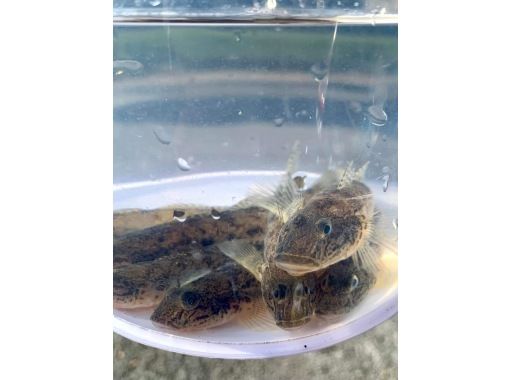
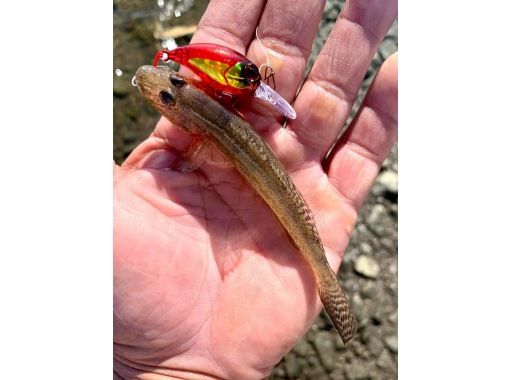
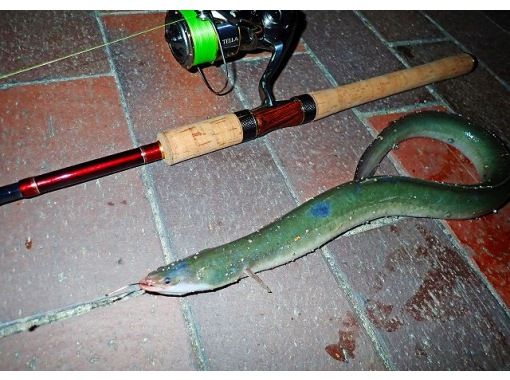
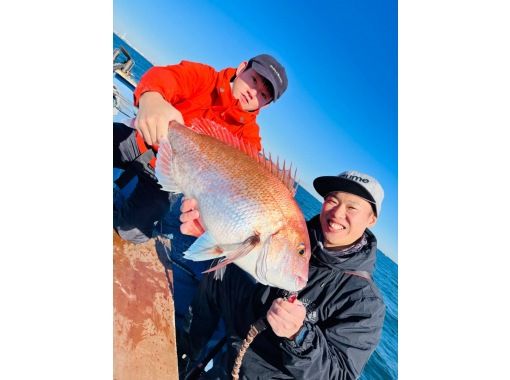
![[Kanagawa, Zushi] 9AM, 1PM - *Family Friendly* @Kanagawa Prefecture Point Rock and Stag Beetle Shrimp Catching Observation Experience (Free Rental of Stupid Boots)の画像](https://img.activityjapan.com/10/48726/10000004872601_atFOJjl6_3.png?version=1713909962)
![[Kanagawa/Yokosuka] Kids Adventure Tour *Family Friendly* River Roughing Tour and Wadanagahama Beach, Rock Roughing Experience (Children only)の画像](https://img.activityjapan.com/10/47359/10000004735901_atFOJjl6_3.png?version=1708934481)
